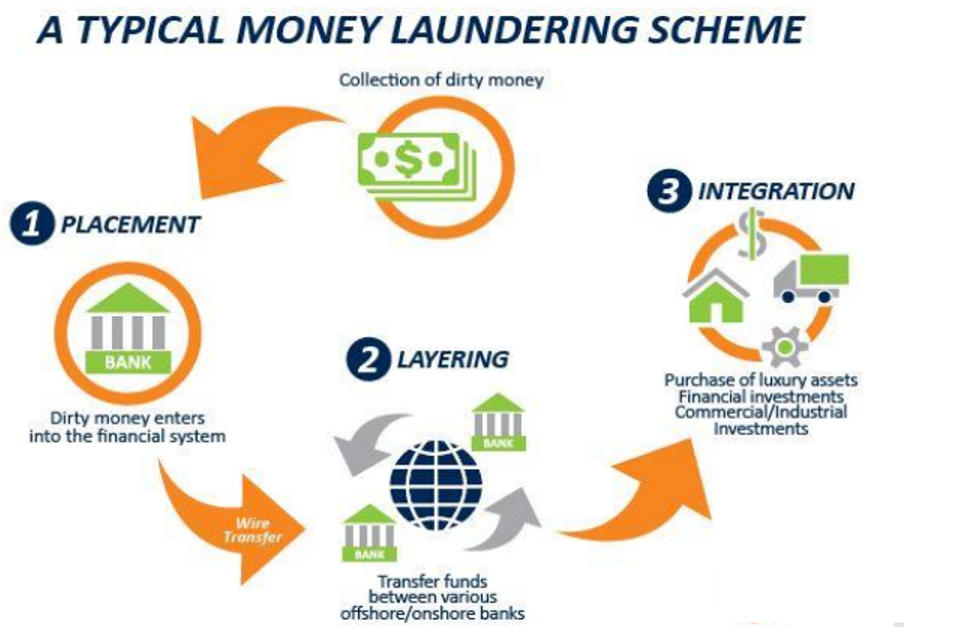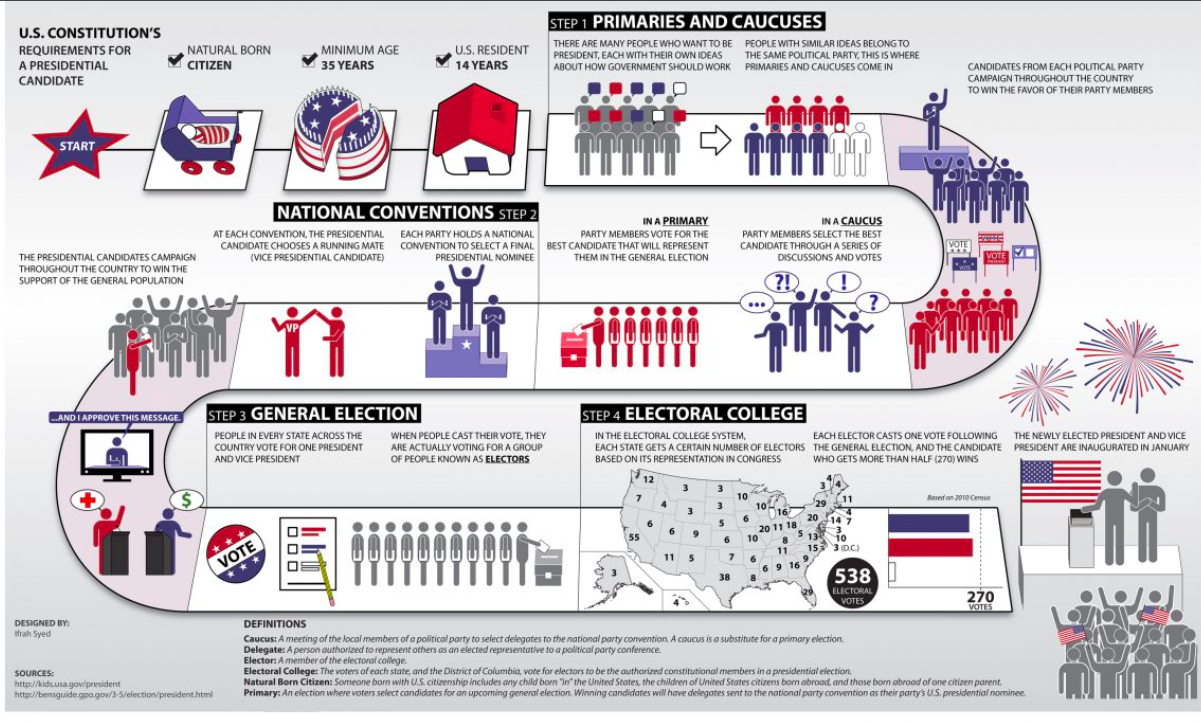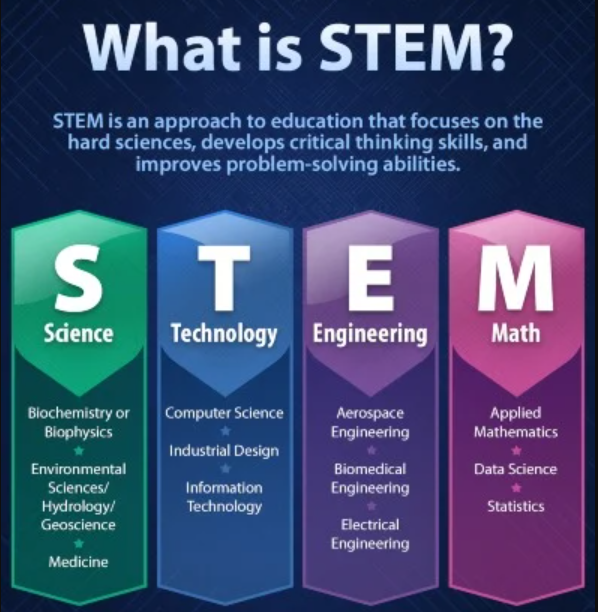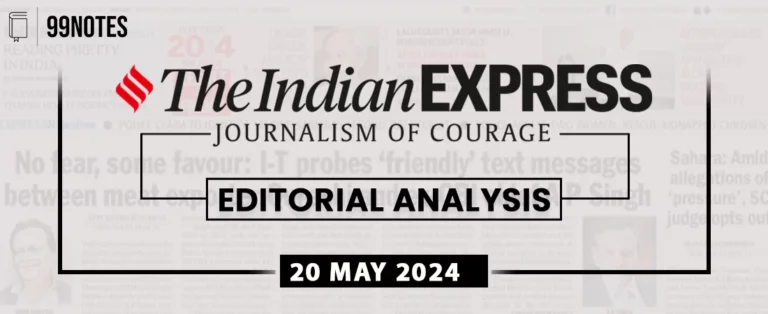7 November 2024 : Daily Current Affairs
1. Supreme Court Rules Prior Government Sanction Required to Prosecute Public Servants Under PMLA
- 1. Supreme Court Rules Prior Government Sanction Required to Prosecute Public Servants Under PMLA
- 2. RNA editing is promising to go where DNA editing can’t
- 3. Government of India and ADB sign $200 million loan to upgrade water supply, sanitation, urban mobility, and other urban services in Uttarakhand
- Prelims Facts
- 1. Donald Trump makes historic comeback, wins second term
- 2. Anglo-Indian leaders call for restoration of reservation in Parliament and Assemblies
- 3. Cabinet clears PM-Vidyalaxmi for collateral-free loans to students
- 4. LMV licence holders can drive transport vehicles weighing under 7,500 kg: Supreme Court
- 5. Anil Pradhan Wins Rohini Nayyar Prize for Revolutionizing Rural STEM Education with Mobile Labs
(Source: Indian Express; Section: Govt & Politics; Page: 06)
| Topic: GS2 – Governance |
| Context: |
|
Analysis of News:

What is PMLA, 2002?
- The Prevention of Money Laundering Act, 2002 (PMLA) is an Act of the Parliament of India enacted to prevent money laundering and provide for the confiscation of property derived from money laundering.
- It aims to combat money laundering related to illegal activities such as drug trafficking, smuggling, and terrorism financing.
- Key Provisions of PMLA:
- Offences and Penalties: PMLA defines money laundering offences and imposes penalties for such activities. It includes rigorous imprisonment and fines for offenders.
- Attachment and Confiscation of Property: The Act allows for the attachment and confiscation of property involved in money laundering. It provides for the establishment of an Adjudicating Authority to oversee these proceedings.
- Reporting Requirements: PMLA mandates certain entities, such as banks and financial institutions, to maintain records of transactions and report suspicious transactions to the Financial Intelligence Unit (FIU).
- Designated Authority and Appellate Tribunal: The Act establishes a Designated Authority to assist in the investigation and prosecution of money laundering offences. It also provides for the establishment of an Appellate Tribunal to hear appeals against orders of the Adjudicating Authority.
Key Judgment Summary
- The Supreme Court ruled that Section 197(1) of the Code of Criminal Procedure (CrPC), which requires prior government sanction to take cognizance of an offense against public servants, applies to the Prevention of Money Laundering Act (PMLA).
- This decision upheld the Telangana High Court’s order dismissing the trial court’s cognizance of money laundering charges against IAS officers Bibhu Prasad Acharya and Adityanath Das, without government sanction.
Section 197(1) of CrPC
- Section 197(1) specifies that any public servant accused of offenses in the line of duty cannot be prosecuted without prior government approval.
- The Court held that the officers in question qualify under this requirement since their alleged offenses were related to their official duties.
Enforcement Directorate’s (ED) Argument
- The ED argued that Acharya didn’t meet the CrPC’s definition of a public servant requiring government sanction and claimed that Section 71 of PMLA supersedes CrPC provisions.
- However, the Court rejected this, stating that PMLA doesn’t override CrPC in this context.
Court’s Interpretation of PMLA Sections 65 and 71
- The Court ruled that Section 65 of the PMLA permits CrPC provisions to apply unless inconsistent with PMLA. As no inconsistency was found between PMLA and CrPC’s Section 197(1), CrPC’s requirement for prior sanction stands.
- It further clarified that Section 71 (PMLA’s overriding clause) does not nullify Section 65, as such an interpretation would render Section 65 meaningless.
Allegations and Case Context
- The ED alleged that Acharya conspired with then CM Jagan Mohan Reddy to violate norms in land allocation for an SEZ project, indirectly enabling money laundering.
- Das allegedly violated water allotment norms to favor India Cement Limited, also linked to money laundering.
- However, the Court ruled that cognizance of these charges was improperly taken without the mandatory prior sanction under Section 197(1) of CrPC.
Implications of the Ruling
- This ruling emphasizes the protection public servants have under Section 197(1) CrPC, even when charged under special laws like PMLA, ensuring that prosecution requires prior governmental approval if actions are linked to official duties.
| What are the Different Concerns Regarding PMLA, 2002? |
|
Proceeds of Crime –Too Broad Definition:
Large Number of Offences:
Burden of Proof on Accused:
Overreach by Officers
Stringent Bail Conditions:
Arrest of Person Without Written Communication of Grounds of Arrest:
|
| Practice Question: Examine the significance of requiring prior government sanction for prosecuting public servants under Section 197(1) of the CrPC in the context of cases under the Prevention of Money Laundering Act (PMLA). How does this impact accountability and protection of public servants in India? (250 words/15 m) |
2. RNA editing is promising to go where DNA editing can’t
(Source – The Hindu, International Edition – Page No. – 7)
| Topic: GS3 – Science and Technology |
| Context |
|
Breakthrough in RNA Editing by Wave Life Sciences
- Wave Life Sciences, a biotech firm in Massachusetts, became the first to use RNA editing at the clinical level to treat genetic conditions.
- The success builds on RNA’s essential role in functions like RNA interference and the rapid development of mRNA vaccines, highlighting RNA’s importance beyond gene regulation.
RNA Editing: Mechanism and Technique
- RNA Editing Process: RNA editing corrects mistakes in mRNA after synthesis but before protein formation, preventing faulty proteins associated with genetic disorders.
- ADAR Enzyme: ADAR (adenosine deaminase acting on RNA) converts adenosine to inosine in mRNA, mimicking guanosine’s function and allowing for accurate protein synthesis.
- Guided RNA (gRNA): A gRNA directs ADAR to specific mRNA segments, allowing site-specific RNA editing for treating genetic disorders.
Expanding RNA Editing Applications
- The company aims to treat Huntington’s disease, Duchenne muscular dystrophy, and some forms of obesity using similar RNA editing techniques.
- Other firms, like Korro Bio and Shape Therapeutics, are also working on RNA editing for conditions like Parkinson’s, heart disease, and neurological disorders.
Advantages and Challenges of RNA vs. DNA Editing
- Advantages of RNA Editing:
- Temporary Changes: RNA edits are temporary, allowing effects to fade over time, which helps reduce long-term risks.
- Lower Immune Reaction Risk: Uses ADAR enzymes naturally present in humans, minimising immune responses.
- Reversible Therapy: RNA editing enables therapy discontinuation if issues arise, enhancing patient safety.
- Challenges of RNA Editing:
- Specificity Issues: ADAR enzymes can affect non-targeted areas, risking side effects.
- Repeated Treatments Needed: Effects are temporary, requiring ongoing administration.
- Delivery Constraints: Lipid nanoparticles and vectors limit transport capacity for large molecules.
| Practice Question: Discuss the potential of RNA editing as a therapeutic tool for genetic disorders. Compare its advantages and challenges with DNA editing. (250 Words /15 marks) |
3. Government of India and ADB sign $200 million loan to upgrade water supply, sanitation, urban mobility, and other urban services in Uttarakhand
(Source – https://pib.gov.in/PressReleseDetail.aspx?PRID=2071145®=3&lang=1 )
| Topic: GS2 – International Relations – Important International institutions |
| Context |
|
Analysis of the news:
- India and ADB signed a $200 million loan for the Uttarakhand Livability Improvement Project.
- The project focuses on upgrading water supply, sanitation, urban mobility, and services in Uttarakhand.
- It aims to enhance infrastructure resilience to climate risks like floods and landslides.
- Key cities Haldwani, Champawat, Kichha, Kotdwar, and Vikasnagar will benefit.
- Water supply systems will be improved, with smart metres and new infrastructure in four cities.
- Women-focused initiatives include livelihood training and capacity building in water supply and sanitation management.
| Asian Development Bank (ADB) |
|
| Practice Question: Examine the role of the Asian Development Bank (ADB) in promoting sustainable development in India. Discuss its major projects and the impact of ADB’s financial assistance in improving infrastructure, urban services, and climate resilience in Indian states. (150 Words /10 marks) |
Prelims Facts
1. Donald Trump makes historic comeback, wins second term
| Context |
|

Analysis of the news:
- Donald Trump won the U.S. presidency for a second term, defeating Kamala Harris, the Democratic nominee.
- Republicans gained control of the Senate with 52 seats, setting up a conservative-leaning Congress.
- Trump’s campaign centred on economic concerns, inflation, immigration, and border security.
- He promised mass deportations, increased border security, and tariffs to fund tax cuts.
- Kamala Harris emphasised unity, reproductive rights, and opposed Trump’s authoritarian tendencies but struggled to appeal to enough voters.
- Harris lost key battleground states, including Pennsylvania, Wisconsin, and Michigan, which diminished her chances.
- Trump gained support from new demographics, particularly Hispanic and Gen-Z voters, while retaining support among Black voters.
- Usha Vance, J.D. Vance’s wife, will become the first Indian American Second Lady of the U.S.
| How US President Is Elected? |
 |
2. Anglo-Indian leaders call for restoration of reservation in Parliament and Assemblies
| Context |
|
Constitutional provisions for Anglo Indians:
- Representation in Parliament: The Constitution of India provided representation for the Anglo-Indian community in the Lok Sabha and State Assemblies through Article 331 and 333.
- Nomination: The President could nominate up to two members of the Anglo-Indian community to the Lok Sabha under Article 331, and one member to the State Assemblies under Article 333 if they were not adequately represented.
- Relevance: This provision was intended to ensure the political voice of the Anglo-Indian community.
- Revocation: The 104th Constitutional Amendment Act (2019) ended the provision for nomination of Anglo-Indians to the Lok Sabha and State Assemblies, effectively removing their representation.
- Caste Census: The Anglo-Indian community advocates for a caste census to reflect their numbers accurately.
3. Cabinet clears PM-Vidyalaxmi for collateral-free loans to students
(Source: Indian Express; Section: Govt & Politics; Page: 05)
| Context: |
| The Union Cabinet approved the PM-Vidyalaxmi scheme for accessible education loans. |
Analysis of News:

PM-Vidyalaxmi Scheme: Accessible Education Loans
- The PM-Vidyalaxmi scheme, recently approved by the Union Cabinet, aims to facilitate collateral-free and guarantor-free education loans for students admitted to Quality Higher Education Institutions (QHEIs).
- With a budget of ₹3,600 crore for 2024-2031, the scheme is projected to benefit 7 lakh students.
- Eligible students will receive 75% credit guarantee from the central government on loans up to ₹7.5 lakh, and 3% interest subvention on loans up to ₹10 lakh for families with an annual income below ₹8 lakh during the moratorium period.
- Priority will be given to students from government institutions pursuing technical and professional courses.
Expanding Access Beyond Existing Schemes
- The PM-Vidyalaxmi scheme complements the Central Sector Interest Subsidy (CSIS), which offers full interest subvention on loans up to ₹10 lakh for students with family incomes below ₹4.5 lakh.
- Unlike CSIS, the new scheme extends to a broader category of students and includes non-technical and non-professional courses.
- Eligible institutions, determined by NIRF rankings, include the top 100 institutions, select state government institutions, and all central institutions, encompassing 860 institutions in total.
4. LMV licence holders can drive transport vehicles weighing under 7,500 kg: Supreme Court
(Source: Indian Express; Section: Govt & Politics; Page: 06)
| Context: |
|
Analysis of News:
Legislative Intent and Definition of LMV
- The Court referred to Section 2(28) of the Motor Vehicles Act, which defines “motor vehicle,” concluding that the legislature did not intend to distinguish between LMVs and smaller transport vehicles.
- Thus, transport vehicles below 7,500 kg are included in the LMV category.
Insurance Disputes and Previous Rulings
- The ruling aligns with the 2017 Mukund Dewangan v. Oriental Insurance Co. Ltd. case, where a three-judge bench had ruled similarly.
- This issue emerged from insurance claims disputes, with insurers arguing that LMV licence holders were unfit to drive transport vehicles.
- However, the Court noted a lack of empirical data linking such drivers to increased accidents.
Road Safety and Licensing
- While acknowledging road safety concerns, the Court emphasized that assumptions without data cannot drive policy.
- It highlighted multiple accident causes, including poor road design and driver behavior, rather than attributing them solely to LMV licence holders driving transport vehicles.
- The Court also noted that legislative amendments could address any licensing system gaps, as Attorney General R Venkataramani indicated future reforms.
Evolving Licensing Regime
- The bench emphasized that India’s licensing regime must adapt to modern developments in vehicle technology and transportation platforms.
- The judgment highlighted the need to balance livelihood opportunities for drivers with regulatory adjustments, without compromising road safety.
5. Anil Pradhan Wins Rohini Nayyar Prize for Revolutionizing Rural STEM Education with Mobile Labs
(Source: Indian Express; Section: Express Network; Page: 07)
| Context: |
|
Analysis of News:

About Rohini Nayyar Prize
- This award, instituted by the Nayyar family in memory of economist and IAS officer Rohini Nayyar, honors those under 40 who make substantial contributions to rural development.
- Nayyar’s work in rural development and poverty alleviation, especially during her time with the Planning Commission, was recognized as transformative.
Background of Anil Pradhan
- Pradhan, an engineer and educationist from Baral village, Odisha, focuses on hands-on STEM (science, technology, engineering, and mathematics) education in rural and underserved areas.
- At 28, he emphasizes practical learning and innovation.
Initiatives and Impact
Tinker Spaces
- Pradhan’s primary initiative involves “Tinker spaces”—learning labs equipped for students to engage in creative and technical projects using available tools and materials.
Tinker-on-Wheels
- To extend access, he launched “Tinker-on-Wheels,” a mobile lab offering hands-on experiences with robotics, 3D printing, and more, bringing STEM resources directly to rural students.
Geographic Reach
- Starting from his village, the foundation has expanded its impact to other states, including Telangana, Odisha, and Tamil Nadu.
Perspective on Rural Education
- Pradhan critiques stereotypical narratives that equate rural poverty with farming, stressing the need for societal mindset shifts around rural identity and potential.




